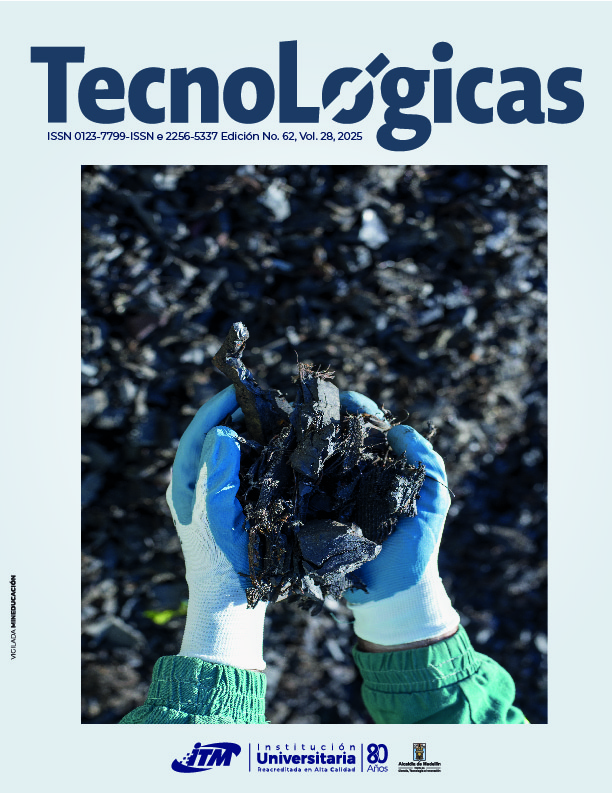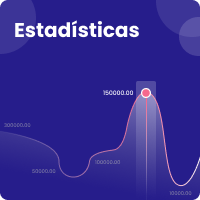Influencia de la velocidad de entrada en el comportamiento de vórtices gravitacionales de agua para generación de energía eléctrica
Resumen
El cambio climático es impulsado principalmente por el uso de combustibles fósiles. Sin embargo, las energías renovables, como la hidroeléctrica, causan deforestación y desplazamiento de la población, y su energía no suele llegar a zonas remotas. Las plantas de potencia por vórtice gravitacional de agua (GWVPP, por sus siglas en inglés) son una alternativa hidroeléctrica que no altera el cauce y caudal de los ríos y pueden usarse en áreas desconectadas de la red eléctrica. Este trabajo se enfocó en estudiar la influencia de la velocidad de entrada en la morfología de vórtices gravitacionales de agua (GWV, por sus siglas en inglés) y sus propiedades fluidodinámicas como presión, velocidad y fracción volumétrica. La metodología empleada consistió en el uso del software de CFD OpenFOAM para hacer las simulaciones, donde se cambió la velocidad de entrada del canal y se graficaron los contornos de magnitud de velocidad, presión estática y fracción volumétricas en la cuenca. Los resultados de la investigación permitieron encontrar que vórtices bien desarrollados se obtienen a partir de una velocidad de entrada de 0.03 m/s, mientras que las velocidades más altas (0.05 m/s y 0.06 m/s) producen contornos de magnitud de velocidad más uniformes. Aunque todos los vórtices tienen un núcleo de aire en la descarga, las velocidades de entrada altas inducen una mayor probabilidad de formación de vórtices débiles. Finalmente, se concluye que velocidades altas también conllevan mayores fracciones volumétricas al interior de la cuenca, lo cual puede ser práctico para sistemas de generación de energía por vórtices de agua debido a su mayor inercia. La velocidad de entrada también influye en el comportamiento de la altura, curvatura y velocidad tangencial de la superficie libre con el radio.
Referencias bibliográficas
N. Gaulin and P. Le Billon, “Climate change and fossil fuel production cuts: assessing global supply-side constraints and policy implications,” Clim. Policy, vol. 20, no. 8, pp. 888–901, Feb. 2020. https://doi.org/10.1080/14693062.2020.1725409
J. Lu, H. Chen, and X. Cai, “From global to national scenarios: Exploring carbon emissions to 2050,” Energy Strat. Rev., vol. 41, p. 100860, May. 2022. https://doi.org/10.1016/j.esr.2022.100860
L. Velásquez, F. Romero-Menco, A. Rubio-Clemente, A. Posada, and E. Chica, “Numerical optimization and experimental validation of the runner of a gravitational water vortex hydraulic turbine with a spiral inlet channel and a conical basin,” Renew. Energy, vol. 220, p. 119676, Jan. 2024. https://doi.org/10.1016/j.renene.2023.119676
A. Sharif et al., “e” Journal of Mechanical Engineering Research and Developments, vol. 44, no. 11, pp. 156-168, 2021.
V. J. Alzamora Guzmán, and J. A. Glasscock, “Analytical solution for a strong free-surface water vortex describing flow in a full-scale gravitational vortex hydropower system,” Water Sci. Eng., vol. 14, no. 1, pp. 72–79, Mar. 2021. https://doi.org/10.1016/j.wse.2021.03.004
H. M. Shabara, O. B. Yaakob, Y. M. Ahmed, A. H. Elbatran, and M. S. M. Faddir, “CFD Validation for Efficient Gravitational Vortex Pool System,” J. Teknol., vol. 74, no. 5, pp. 97-100, May. 2015. https://doi.org/10.11113/jt.v74.4648
M. Mizanur Rahman, T. Jian Hong, and F. Mohd Tamiri, “Effects of Inlet Flow Rate and Penstock’s Geometry on the Performance of Gravitational Water Vortex Power Plant,” Proc. Int. Conf. Ind. Eng. Oper. Manag., vol. 2018, p. 2968-2976, 2018. https://ieomsociety.org/ieom2018/papers/688.pdf
A. Obozov, R. Akparaliev, T. Mederov, B. Ashimbekova, A. Tolomushev, and K. Orazbaev, “Research and development of a gravitational water vortex micro-HPP in the conditions of Kyrgyzstan,” Energy Rep., vol. 10, pp. 544–557, Nov. 2023. https://doi.org/10.1016/j.egyr.2023.06.041
Y. Nishi, R. Suzuo, D. Sukemori, and T. Inagaki, “Loss analysis of gravitation vortex type water turbine and influence of flow rate on the turbine’s performance,” Renew. Energy, vol. 155, pp. 1103–1117, Aug. 2020. https://doi.org/10.1016/j.renene.2020.03.186
B. Vinayakumar, R. Antony, V. A. Binson, and S. Youhan, “Experimental and numerical study on gravitational water vortex power plant for small water bodies,” e-Prime - Advances in Electrical Engineering, Electronics and Energy, vol. 7, p. 100460, Mar. 2024. https://doi.org/10.1016/j.prime.2024.100460
R. Ullah, T. A. Cheema, A. S. Saleem, S. M. Ahmad, J. A. Chattha, and C. W. Park, “Preliminary experimental study on multi-stage gravitational water vortex turbine in a conical basin,” Renew. Energy, vol. 145, pp. 2516–2529, Jan. 2020. https://doi.org/10.1016/j.renene.2019.07.128
J. Betancour Osorio, “Desarrollo de un sistema de generación por vórtice gravitacional,” Tesis de maestría, Universidad de Antioquia, Medellín Colombia, 2022. https://bibliotecadigital.udea.edu.co/bitstream/10495/31736/1/BetancourJohan_2022_DesarrolloTurbinaVortice.pdf
Y. Jiang et al., “Multi–disciplinary optimizations of small-scale Gravitational Vortex Hydropower (SGVHP) system through computational hydrodynamic and hydro–structural analyses,” Sustainability, vol. 14, no. 2, p. 727, Jan. 2022. https://doi.org/10.3390/su14020727
S. Wanchat, R. Suntivarakorn, S. Wanchat, K. Tonmit, and P. Kayanyiem, “A parametric study of a gravitation vortex power plant,” Adv. Mat. Res., vol. 805–806, pp. 811–817, Sep. 2013. https://doi.org/10.4028/www.scientific.net/amr.805-806.811
A. Mamadjanov, D. Yusupov, E. Berkinov, J. Akmalov, and M. Jalilov, “The effect of conical basin geometry on gravitational water vortex power plant,” E3S Web Conf., vol. 563, p. 01010, Aug. 2024. https://doi.org/10.1051/e3sconf/202456301010
S. R. Sreerag, C. K. Raveendran, and B. S. Jinshah “Effect of outlet diameter on the performance of gravitational vortex turbine with conical basin,” International Journal of Science Engineering and Research, vol. 7, no. 4, Apr. 2016. https://www.ijser.org/researchpaper/effect-of-outlet-diameter-on-the-performance-of-gravitational-vortex-turbine-with-conical-basin.pdf
L. Velásquez, J. P. Rengifo, J. Urrego, A. Rubio-Clemente, and E. Chica, “Experimental assessment of hydrodynamic behavior in a gravitational vortex turbine with different inlet channel and discharge basin configurations,” Energies, vol. 17, no. 22, p. 5773, Nov. 2024. https://doi.org/10.3390/en17225773
D. S. Edirisinghe, H.-S. Yang, S. D. G. S. P. Gunawardane, and Y.-H. Lee, “Enhancing the performance of gravitational water vortex turbine by flow simulation analysis,” Renew. Energy, vol. 194, pp. 163–180, Jul. 2022. https://doi.org/10.1016/j.renene.2022.05.053
T. Ahmad Cheema, R. Ullah, and A. S. Saleem, “Performance analysis of a two-stage gravitational water vortex turbine,” IOP Conf. Ser. Earth Environ. Sci., vol. 291, no. 1, p. 012039, Jun. 2019. https://doi.org/10.1088/1755-1315/291/1/012039
P. Sritram, and R. Suntivarakorn, “The efficiency comparison of hydro turbines for micro power plant from free vortex,” Energies, vol. 14, no. 23, p. 7961, Nov. 2021. https://doi.org/10.3390/en14237961
D. A. Sinaga, M. D. Septiyanto, Z. Arifin, G. Rusdiyanto, S. D. Prasetyo, and S. Hadi, “The effect of blade distances on the performance of double-stage Gravitational Water Vortex Turbine,” Adv. Res. Fluid Mech. Therm. Sci., vol. 109, no. 1, pp. 196–209, Oct. 2023. https://doi.org/10.37934/arfmts.109.1.196209
Descargas
Derechos de autor 2025 TecnoLógicas

Esta obra está bajo una licencia internacional Creative Commons Atribución-NoComercial-CompartirIgual 4.0.

| Estadísticas de artículo | |
|---|---|
| Vistas de resúmenes | |
| Vistas de PDF | |
| Descargas de PDF | |
| Vistas de HTML | |
| Otras vistas | |
Datos de los fondos
-
Ministerio de Ciencia, Tecnología e Innovación
Números de la subvención 890








